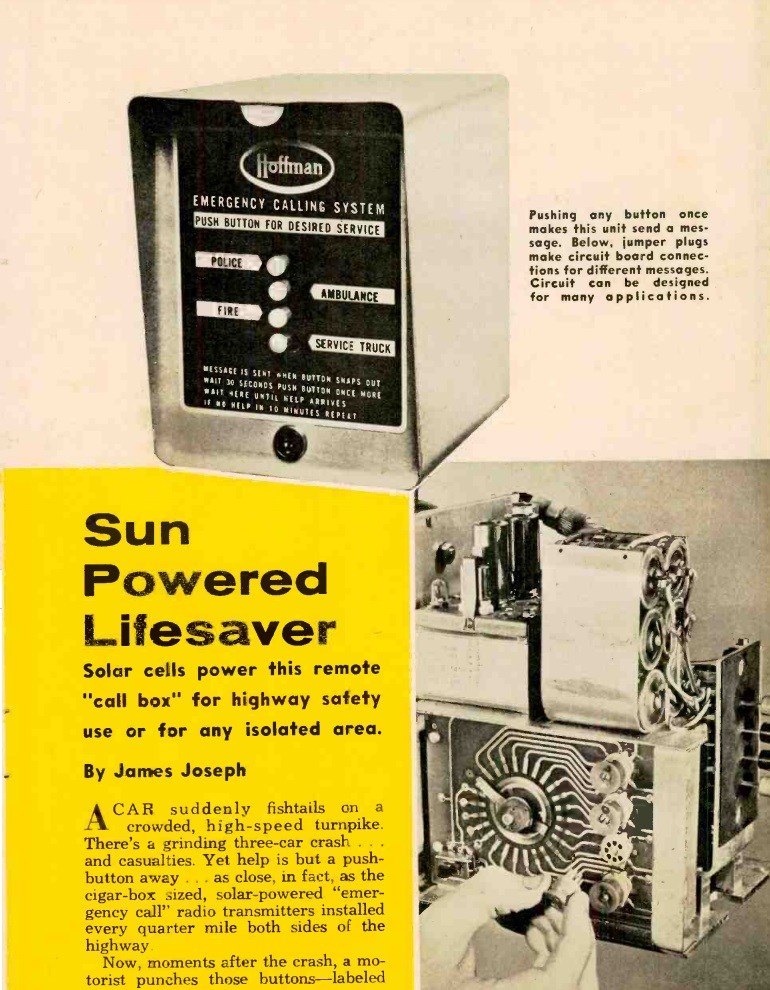 Sixty years ago, the February 1961 issue of Electronics Illustrated showed this prototype of a highway emergency call box from Hoffman Electronics, dubbed the “safety satellite.”
Sixty years ago, the February 1961 issue of Electronics Illustrated showed this prototype of a highway emergency call box from Hoffman Electronics, dubbed the “safety satellite.”
The unit is self-explanatory. In an emergency, the motorist would push the appropriate button for police, fire, ambulance, or service, which would be dispatched from a central control point.
While the FCC had not yet assigned a frequency, the prototype three-tube VHF transmitterwas operating on 72-76 MHz, using FSK transmission with about 1 watt transmitter power. While the article does not specify, from the photo of the device, it appears that the message is sent by a motor-driven keyer.
It was said to have a line-of-sight range of about 25 miles. Each emergency message would transmit for 1.5 seconds, and would represent about 5 minutes charging time with the silicon solar panels. Six NiCd cells were used. On transmit, one was used to power the filaments, and the other five went to a solid-state power supply to provide the B+ voltage.
The price tag for each transmitter was about $300, with the FM receiver running an additional $250-275. Depending on the complexity of the decoding and display consoles, the monitor station could run a total of $3000.
The system was touted as a bargain, since the cost to wire a highway would be about $3000 per mile, with one transmitter every quarter mile on each side of a freeway. This compared to about $8000 per mile to install emergency telephones. When charging, the batteries would be in parallel.
In addition to emergency highway use, the system was capable of sending telemetry for industrial applications.
